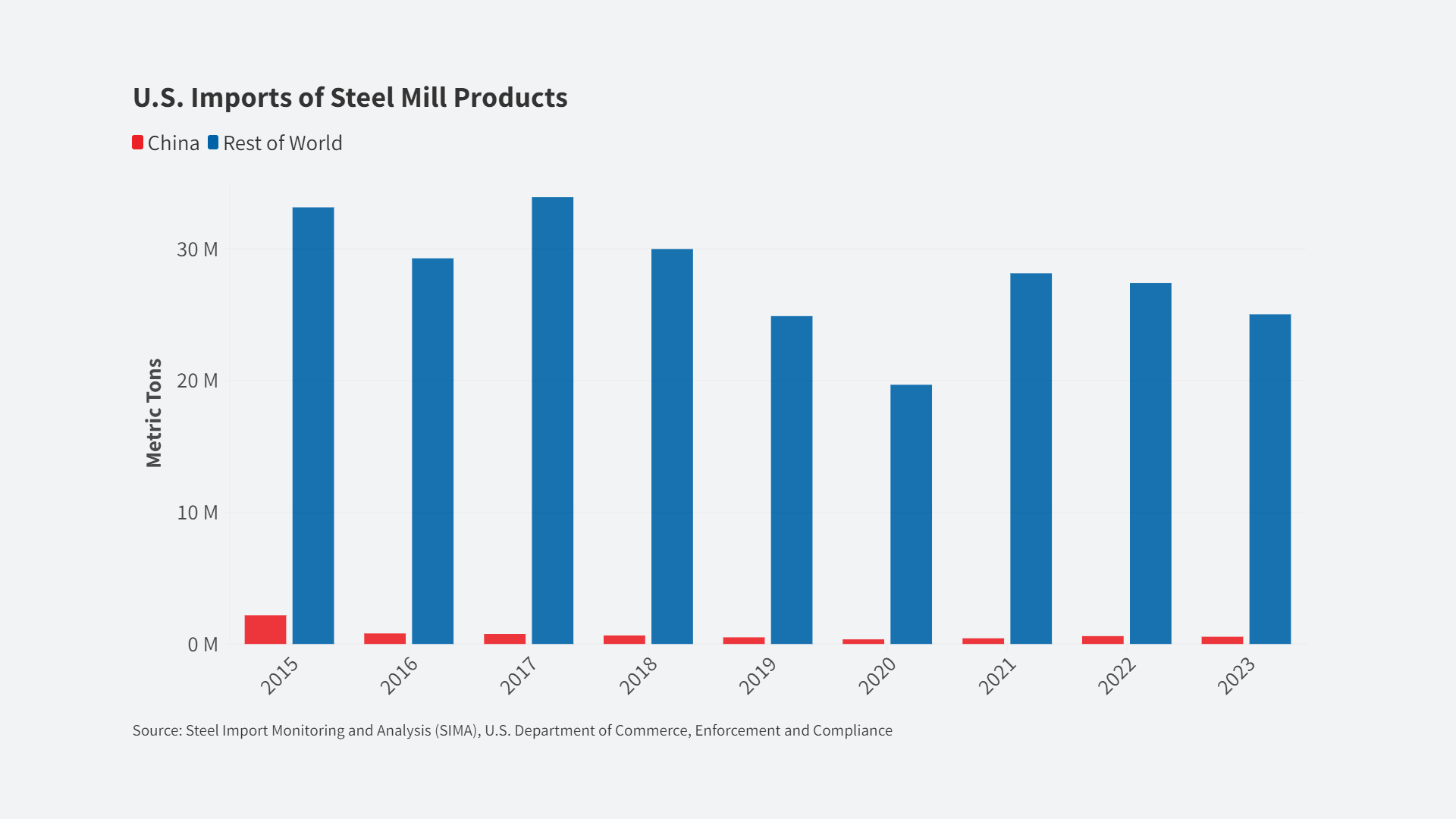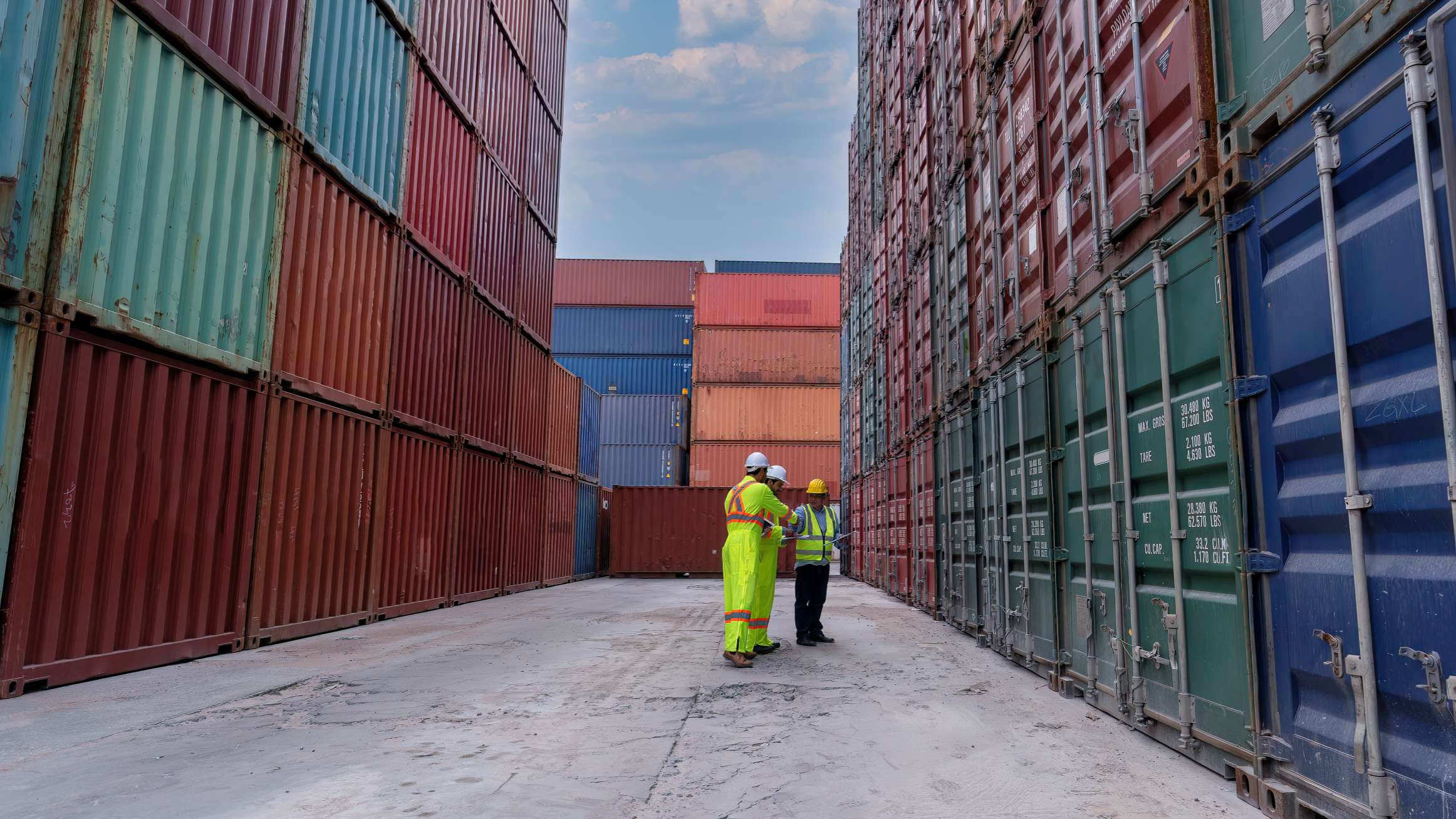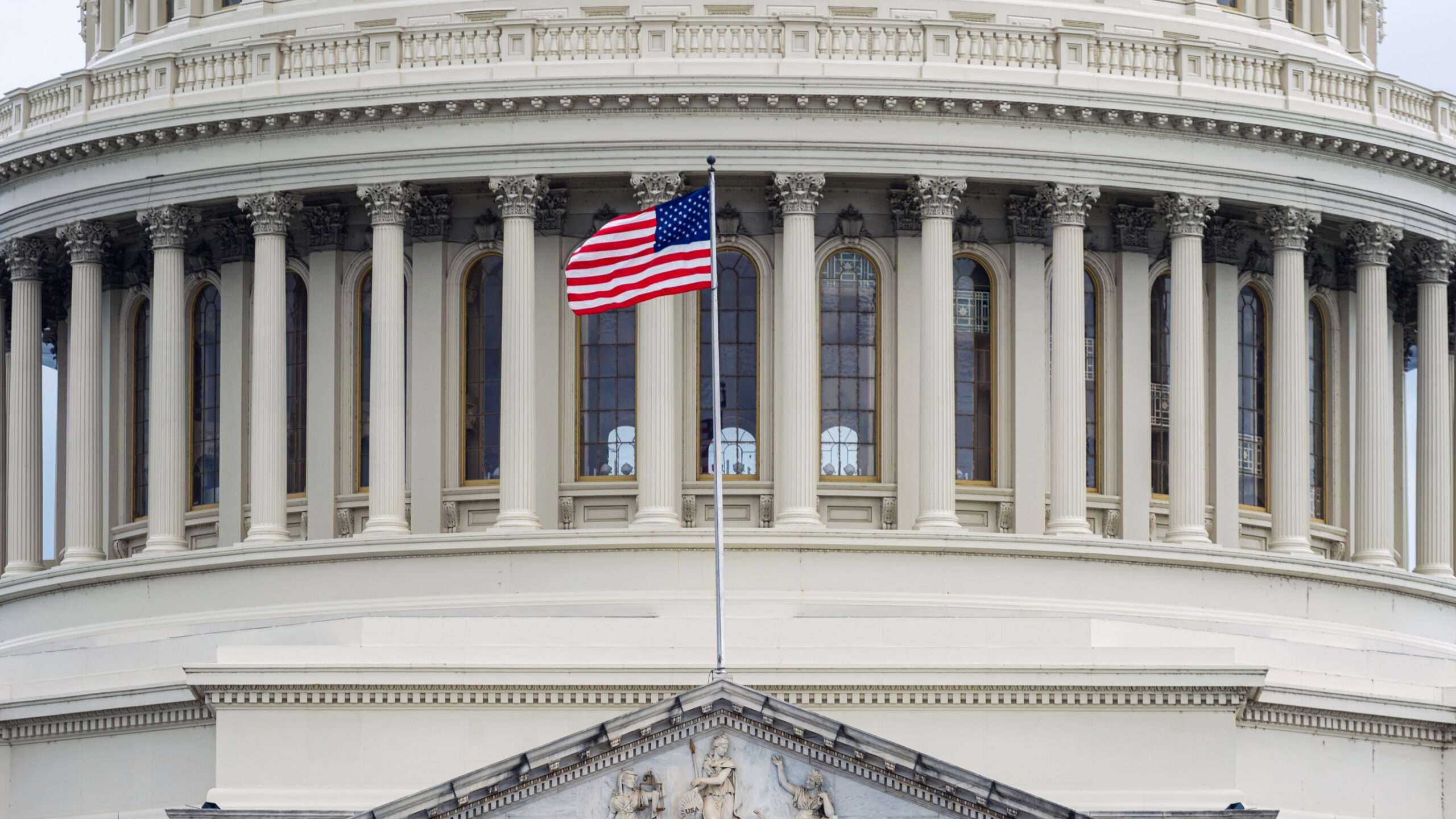
The U.S.-China Economic and Security Review Commission was created by Congress to report on the national security implications of the bilateral trade and economic relationship between the United States and the People’s Republic of China. For more information, visit www.uscc.gov or call 202- 624-1407.
Washington, D.C. – The U.S.-China Economic and Security Review Commission (USCC) released its 2015 Annual Report to Congress today [November 18, 2015].
The 2015 report provides information on and analysis of developments in the U.S.-China security dynamic, U.S.-China bilateral trade and economic relations, and China’s evolving bilateral relationships with other nations. In preparing the 2015 Annual Report to Congress, the USCC conducted seven public hearings, featuring testimony from 62 witnesses; Commissioners visited China, Kazakhstan, Uzbekistan, Vietnam, and Hong Kong, meeting with U.S. diplomats, host government officials, business representatives, academics, journalists, and other experts; and received briefings from executive branch agencies, including the Department of Defense and Intelligence Community, as well as from non-governmental experts and foreign diplomatic and military officials.
This year’s report is divided into three chapters. First, the report’s economic chapter provides a general review of 2015, a detailed examination of the foreign investment climate in China, China’s agenda for market reform and competiveness, digital trade barriers in China, as well as information on China’s commercial cyber espionage efforts. Second, the security and foreign affairs chapter includes a general review of 2015, a detailed look into China’s space and counterspace programs, and analysis of China’s offensive missile forces. In the third chapter, the report reviews China’s relationships with nations in Southeast Asia and Central Asia, and the status of Taiwan and Hong Kong. Finally, the report includes 37 recommendations to Congress based upon the findings presented in the report.
At the release event, Commission Chairman, William Reinsch, and Vice Chairman, Dennis Shea, made the following statmements:
OPENING STATEMENT OF HON. WILLIAM A. REINSCH CHAIRMAN, U.S.-CHINA ECONOMIC AND SECURITY REVIEW COMMISSION
Good morning. Thank you for coming today. My name is Bill Reinsch and I have been the Commission’s Chairman during this year’s hearing and report cycle. Today, I will provide an overview of the economic sections of the Commission’s 2015 Annual Report to Congress, then my colleague, Vice Chairman Dennis Shea, will outline the foreign policy and national security issues examined in this year’s report. We are also joined by other Commissioners who may wish to comment or respond to your questions.
The Commission this year examined a number of economic issues surrounding the U.S.-China bilateral relationship. Among them were the foreign investment climate in China, China’s state-led market reforms and what they mean for U.S. competitiveness, and market access barriers for U.S. companies in digital trade.
The Commission continued to monitor China’s efforts at economic rebalancing, finding that the government’s actions undermined confidence in China’s commitment to reform and the Chinese public’s faith in the government’s ability to manage the economy. The United States’ expectation of economic reforms when Xi Jinping came into power has not yet been realized. Instead, President Xi has relied on standard Chinese economic tools—including currency manipulation, government subsidies for favored industries, overinvestment in fixed assets, and liberal intervention in the financial system—to retain popular support and avoid short term economic pain. At the same time, the government’s crackdown on dissidents and journalists has created significant concern elsewhere in Asia and increased doubts about China’s intentions as it asserts itself on the world stage.
This year, one of the Commission’s hearings assessed the most recent and pressing challenges facing foreign firms operating in China, with a spotlight on China’s Anti-Monopoly Law enforcement. During the hearing, expert witnesses evaluated the potential for China’s planned reforms to create a more transparent, cooperative, and fair environment for foreign investors.
Some of the problems highlighted by witnesses during our hearings were U.S. companies’ lack of market access in certain sectors and the conditioning of market access on the transfer of technology, intellectual property, or know-how to local competitors. China primarily maintains national-level market access restrictions through a Foreign Investment Catalogue, though local governments frequently employ region- or industry-specific Catalogues, further restricting access.
China’s Anti-Monopoly Law enforcement agencies—the Ministry of Commerce, the National Development and Reform Commission, and the State Administration of Industry and Commerce—have failed to treat identical or similar violations of the law equally, resulting in more leniency toward state-owned enterprises, more rigorous enforcement against foreign companies, and substantially varied penalties imposed on companies in similar circumstances.
This propensity, to turn regulations into a weapon against competitors, isn’t new in China. Much of the Commission’s time since its creation in 2001 has been spent documenting ways in which China’s government first attracts foreign investment, especially from the United States, then spends years favoring indigenous companies over U.S. firms, all while refusing to protect the intellectual property of U.S. companies from piracy and counterfeiting.
Nowhere are these conditions more pronounced than in the information and communications technology sector. Currently, the government in Beijing is considering a requirement that U.S. technology companies and their customers turn over source code, encryption software, and create backdoor entry points into otherwise secure networks.
This year, the Commission published 37 recommendations for Congress to consider. I’ll highlight just a few on the economic side.
In order to address issues in the foreign investment climate, we recommend Congress assess the ability of, and if necessary amend, existing U.S. trade laws to address China’s industrial policies, abusive legal or administrative processes, and discriminatory treatment of foreign investors, and to determine the consistency of these practices with China’s World Trade Organization commitments.
Additionally, Congress should consider legislation conditioning the provision of market access to Chinese investors in the United States on a reciprocal, sector-by-sector basis to provide a level playing field for U.S. investors in China.
One of the most covered aspects of the bilateral relationship in both media and Congress this year has been cybersecurity. As the largest and most web-dependent economy in the world, the United States is the largest target for cyber espionage targeting commercial intellectual property.
The Chinese government is in the process of passing comprehensive new laws and regulations on cybersecurity that directly impact trade in digital goods and services in a wide range of industries, including the news media, banking, credit card transactions, online retail trade, entertainment media, and telecommunications. Some of these new rules would have the effect of excluding U.S. companies from participating in the world’s fastest-growing digital market by requiring, for example, that servers containing information about Chinese citizens and companies be located exclusively in China, and that companies doing business in China provide encryption keys to allow government entry into their databases.
For these reasons we believe it is important for Congress to assess whether U.S.-based companies that have been hacked should be allowed to engage in counterintrusions for the purpose of recovering, erasing, or altering stolen data in offending computer networks. In addition, Congress should study the feasibility of a foreign intelligence cyber court to hear evidence from U.S. victims of cyberattacks and decide whether the U.S. government might undertake counterintrusions on a victim’s behalf.
Thank you for your interest in the Commission’s work. When the Vice Chairman has concluded, we will be happy to take your questions.
OPENING STATEMENT OF HON. DENNIS SHEA
VICE CHAIRMAN, U.S.-CHINA ECONOMIC AND SECURITY REVIEW COMMISSION
Good morning, everyone, and thank you for coming today. I will begin with some key security and foreign policy developments that the Commission identified in its 2015 Annual Report. The Commission’s deliberations on these issues were informed by hearings held throughout the year, as well as a fact-finding trip this summer to China, Kazakhstan, Uzbekistan, Vietnam, and Hong Kong.
China’s “Silk Road” initiatives in Central and Southeast Asia, the Asian Infrastructure Investment Bank, and the New Development Bank, among other institutions, reflect China’s strategy of extending its diplomatic reach while boosting Chinese exports by creating demand for Chinese-built infrastructure.
China’s economic engagement with Central Asia serves two specific purposes: First, it promotes the security and development of Xinjiang province, which shares an extensive border with Kazakhstan, Kyrgyzstan, and Tajikistan. Second, it contributes to China’s overall economic growth by allowing China to diversify its energy portfolio by gaining access to Central Asian resources and developing new markets for its companies in industries experiencing overcapacity at home.
China and the United States appear to share similar economic development priorities in Central Asia, such as new market development in an effort to help shore up developing nations, yet Beijing and Washington pursue these goals in very different ways, which could make meaningful cooperation in the region challenging. In particular, while the U.S. seeks to encourage democratization and discourage corruption in government and business, China is more tolerant of the region’s widespread corruption.
U.S.-China security relations suffered from rising tensions and growing distrust in 2015, largely due to China’s aforementioned cyberespionage activities against a range of U.S. government, defense, and commercial entities, as well as its unprecedented island-building campaign in the South China Sea. In just two years, China has presented other South China Sea claimants with a fait accompli by dredging up nearly 3,000 acres of sand in disputed waters on which to stake its claim, station military assets, and project force into contested waters. These activities are stirring anxiety and distrust in Southeast Asia; Vietnamese government officials and other experts expressed to the Commission the growing sense that China is strategically encircling the country.
In October, after months of China’s increasingly aggressive assertions of its South China Sea claims, a U.S. Navy guided missile destroyer conducted a freedom of navigation patrol within 12 nautical miles of one of the reclaimed features for the first time. Though China’s maritime dispute with Japan over the Senkaku Islands in the East China Sea received less media attention in 2015, China continued to quietly increase its military and civilian presence in contested waters by conducting regular air and maritime patrols near the islands and erecting 16 energy exploitation structures.
China’s military continues to expand its reach beyond the East and South China seas. In September 2015, China’s Navy sailed through Alaska’s Aleutian Islands, the closest it has ever sailed to U.S. territory during a distant sea deployment without a port call. China’s military also conducted exercises in the Mediterranean Sea, antipiracy patrols in the Gulf of Aden, and an evacuation of noncombatants in Yemen. To support these expanding capabilities, China appears to be seeking to establish its first overseas military facility in Djibouti. The Chinese Navy’s increasing activities far from China’s shores reflect China’s growing capability and willingness to use its military to protect its overseas economic assets and expatriate population.
Beyond the increasing blue water profile of China’s naval forces, the Commission examined two additional aspects of China’s ongoing military modernization efforts: China’s space and counterspace programs and its offensive missile forces.
China has become one of the world’s leading space powers after decades of prioritization and investment. China’s space program generates international prestige and influence, and enables China to collaborate on a range of bilateral and multilateral space activities. Among its goals in the space industry, China specifically aimed to capture 15 percent of the global launch services market and 10 percent of the global commercial satellite market by 2015, although these efforts have produced mixed results. Militarily, as its developmental counterspace capabilities become operational, China will be able to target vulnerabilities in the space- dependent U.S. national security architecture. These capabilities could hold at risk U.S. national security satellites in every orbital regime.
China’s space and counterspace programs have significant implications for the United States. That’s why the Commission recommends Congress continue to support the U.S. Department of Defense’s efforts to reduce the vulnerability of U.S. space assets through cost-effective solutions, such as the development of smaller and more distributed satellites, hardened satellite communications, and non-space intelligence, surveillance, and reconnaissance assets such as unmanned aerial vehicles.
When examining China’s offensive missile forces, the Commission found China has achieved extraordinarily rapid growth in its conventional missile capability. In fact, China has the most active ballistic and cruise missile program in the world today. China’s initial conventional missile development focused heavily on expanding its short-range ballistic missile force for Taiwan contingencies. In the past decade, China’s development of longer-range missiles, pursuit of advanced missile technologies, and diversification of its launch platforms have enabled it to hold at risk a wider range of targets farther from its shores, even as far as the second island chain.
China’s short-range ballistic missile force has grown from 30 to 50 missiles in the mid-1990s to more than 1,200 in 2015, mostly deployed along the Taiwan Strait. China has also developed and fielded new types of medium-range and intermediate-range ballistic missiles. It currently has the ability to conduct precision strikes against land and naval targets within the first island chain.
As part of its missile force modernization, China is developing cruise missiles that are increasingly difficult for the U.S. military to detect and defend against. It fielded its first ground-launched land-attack cruise missile, and is developing air-, ship-, and submarine-launched cruise missiles with land-attack and antiship missions. The YJ–18 anti-ship cruise missile is almost certainly capable of supersonic speeds during the terminal phase of its flight, a feature that reduces the time shipborne defenses have to react to an incoming threat. In the meantime, the sheer number of China’s cruise missiles poses a formidable challenge against existing U.S. Navy defenses.
These developments have led the Commission to recommend Congress direct the U.S. Department of Defense to provide an unclassified estimate of the People’s Liberation Army Second Artillery Force’s inventory of missiles and launchers, by type, in future iterations of its annual report to Congress analyzing military and security developments involving China. These estimates were included in past reports but suspended following the 2010 edition.
U.S.-Taiwan relations in 2015 remained strong, despite the lack of substantive progress on bilateral trade and investment negotiations and the absence of new major U.S. arms sales to Taiwan. In 2014, annual bilateral trade reached a record high, while Taiwan became the tenth-largest trading partner of the United States, passing both India and Saudi Arabia. U.S.-Taiwan military-to-military contacts also increased in 2014. That year, more than 3,000 DOD personnel conducted visits to Taiwan, a 50 percent increase over visits in 2013.
Earlier this month, the Commission was pleased to see the House of Representatives pass a bill “to direct the President to develop a strategy to obtain observer status for Taiwan in the International Criminal Police Organization.” This action is consistent with the Commission’s recommendation that Congress encourage the Administration to increase its public support of Taiwan’s participation in international organizations.
The Commission’s Annual Report also analyzes recent political developments in Hong Kong following last year’s Occupy Central protests and notes that press freedom in Hong Kong is subject to increasing pressure from Beijing.
In addition to the report, I welcome you to explore our 2015 hearing transcripts, policy briefs, and research papers on the Commission’s website, www.USCC.gov.
My fellow Commissioners and I look forward to working with Congress throughout the coming year to address the issues we have identified and monitor new developments as they arise. Thank you.













